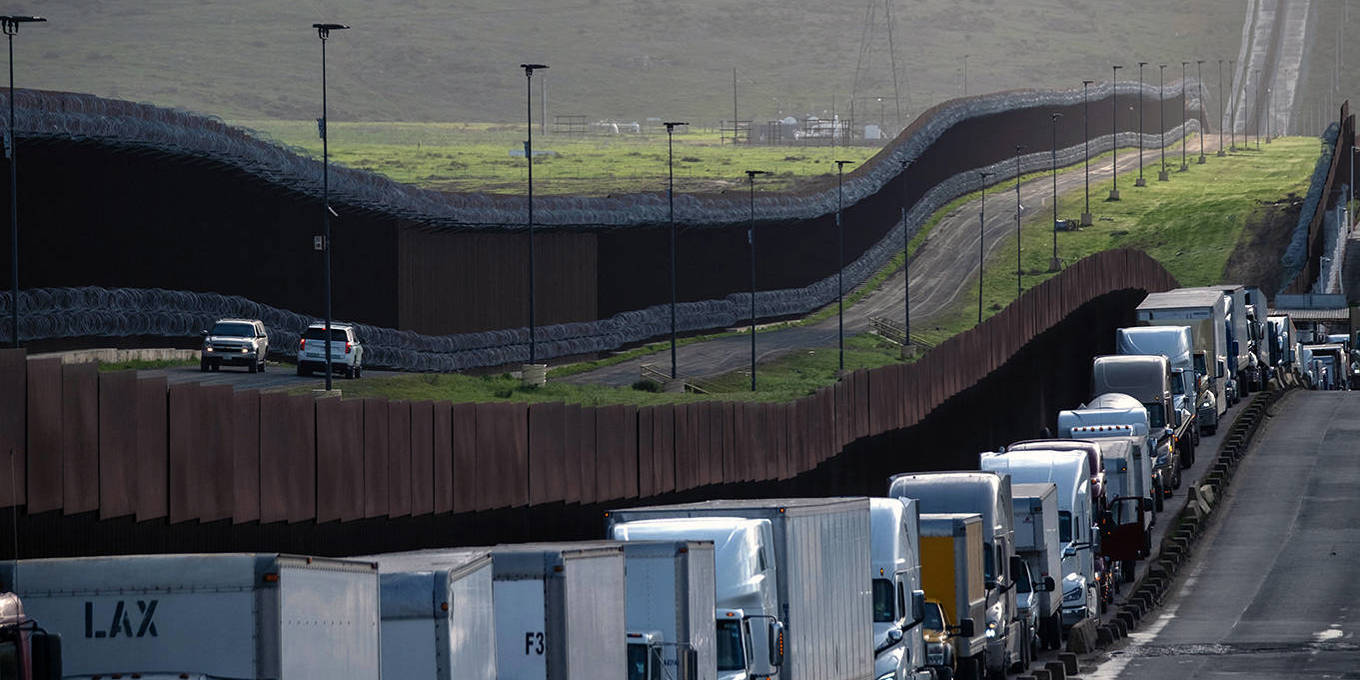Latin America Should Take the Long View on Tariffs
Work area(s)
Op-ed by José Manuel Salazar-Xirinachs, Executive Secretary of ECLAC, published in Project Syndicate on 23 April, 2025 (all rights reserved).

America’s tariff onslaught is less a passing whim than an attempt to reconfigure global economic and political forces. In such a volatile environment, Latin America and the Caribbean must mitigate immediate risks while also implementing far-sighted measures that reinforce the region’s commitment to structural change.
SANTIAGO – On April 2, the United States announced a raft of “reciprocal” tariffs, ranging from an additional 10% to 50%, on imported goods. President Donald Trump’s sweeping tariff blitz, which left no country unscathed, was the biggest shock to hit the global trading system in at least a century, challenging key pillars of multilateralism and the rules-based international order.
A week later, the US administration escalated its trade war with China, increasing tariffs on Chinese imports to more than 100%, but paused measures on all other countries for 90 days, applying a flat 10% tariff during this period. Many governments have since reached out to the US to negotiate.
These moves are not just about rebalancing trade. They are part of a broader geopolitical shift and fragmentation of the world economy. America’s tariff onslaught is less a passing whim than an attempt to reconfigure global economic and political forces. While the most disruptive scenarios seem to have been averted for now, the situation remains uncertain and exceptionally fluid.
Given this, Latin America and the Caribbean (LAC) should respond by adopting a two-pronged strategy that distinguishes between short-term stabilization and long-term transformation. That means LAC governments should articulate a sensible and coherent response to the US tariff threats, avoiding reactive measures that could increase uncertainty. Maintaining macroeconomic stability, communicating clearly with markets, and reinforcing institutional credibility are all essential for ensuring confidence. In the medium to long term, these countries must deliver structural change – including strengthening growth capacity, increasing productivity, reducing inequality, and bolstering institutions – to escape development traps.
To be sure, the initial reciprocal tariffs were so staggering that many feared they could trigger a recession. But Trump’s “Liberation Day” tariffs, if implemented, arguably could create opportunities for trade diversion to LAC countries, which received relatively light treatment: most escaped with the minimum 10% tariff, except for Venezuela (15%), Nicaragua (18%), and Guyana (38%). Mexico was hit with a 25% tariff, although goods that complied with the United States-Mexico-Canada Agreement would remain exempt. These lower rates implied an increase in the margin of preference for the region’s exporters. (Even so, the tariffs caught many in the region off guard, given that 11 LAC countries have signed free-trade agreements with the US.)
But this relative advantage will not materialize – at least for now. The 10% blanket tariff imposed during the 90-day pause has leveled the playing field (except for China). Its direct impact on the LAC region will depend on the extent to which each country relies on trade with the US. According to calculations by the United Nations Economic Commission for Latin America and the Caribbean (ECLAC), around 80% of Mexico’s goods exports, and 30-60% of those from Central America and the Caribbean, go to the US, leaving them particularly exposed. By contrast, South American countries on the whole export less than 18% of their goods to the US, except for Ecuador (22%) and Colombia (32%); in Argentina, Brazil, and Uruguay, the share is less than 10%. More generally, tariffs can weaken investment and job growth, and stoke inflationary pressures.
But much will be determined by ongoing tariff negotiations. Trade diversion is still a possibility. For example, Brazil and Argentina could expand exports of soybeans – both countries are major producers – to China, which has imposed staggeringly high retaliatory tariffs on the US, another leading soybean exporter.
While LAC countries should secure short-term gains where they can, the ever-shifting tariff landscape underscores the importance of developing a forward-looking agenda. The LAC region can achieve its long-term aspirations by pursuing four objectives. First, the current volatility creates an incentive to diversify trade partnerships. The region’s governments should forge alliances with blocs such as the European Union and the Association of Southeast Asian Nations, and emerging economies such as China and India.
Second, at this critical juncture, the LAC region should make good on its leaders’ rhetoric of solidarity by deepening economic integration. This would require a focus on sharing technology, facilitating trade, harmonizing regulations, developing regional value chains, and creating logistics corridors. Third, individual countries should adopt development policies that increase the rate of innovation and economic growth, as emphasized by recent reports from ECLAC.
Lastly, amid such uncertainty, it is essential to strengthen the region’s capacity for strategic foresight. This sort of “anticipatory governance” calls for long-term strategies that look beyond political cycles, multi-scenario development planning, participatory policy design, and institutional agility.
We cannot expect clarity on the scope or duration of America’s new tariff regime anytime soon. The broader economic and geopolitical repercussions of these erratic policy moves are equally opaque. In such a volatile environment, short-term prudence should be coupled with long-term ambition. That means LAC countries must mitigate immediate risks while also implementing far-sighted measures that reinforce their commitment to change. With a focus on diversification, integration, productive development, and anticipatory governance, the region can use this period of uncertainty to reposition itself in the emerging world order and accelerate its development.
Contact
Public Information Unit
- prensa@cepal.org
- (56 2) 2210 2040